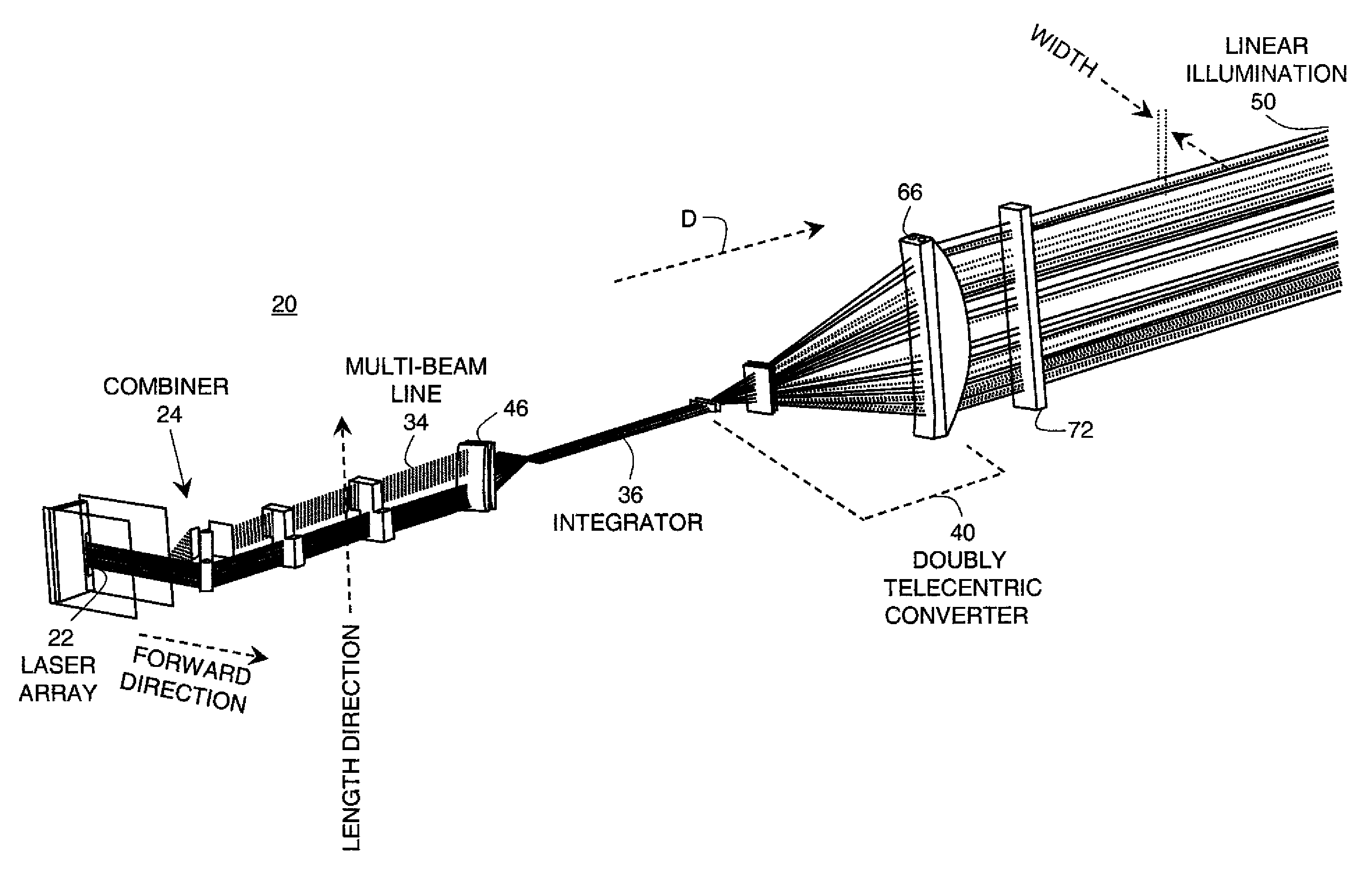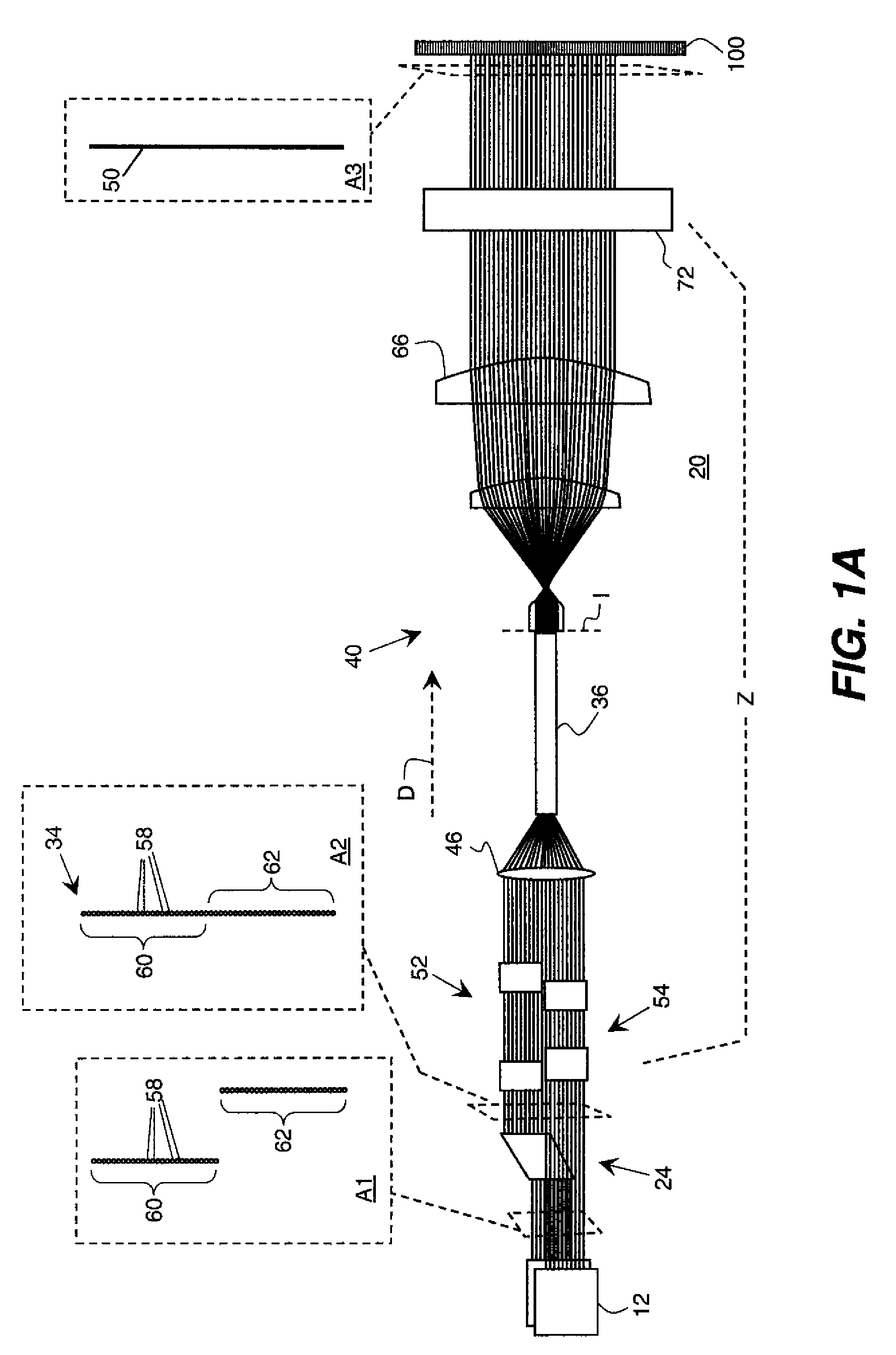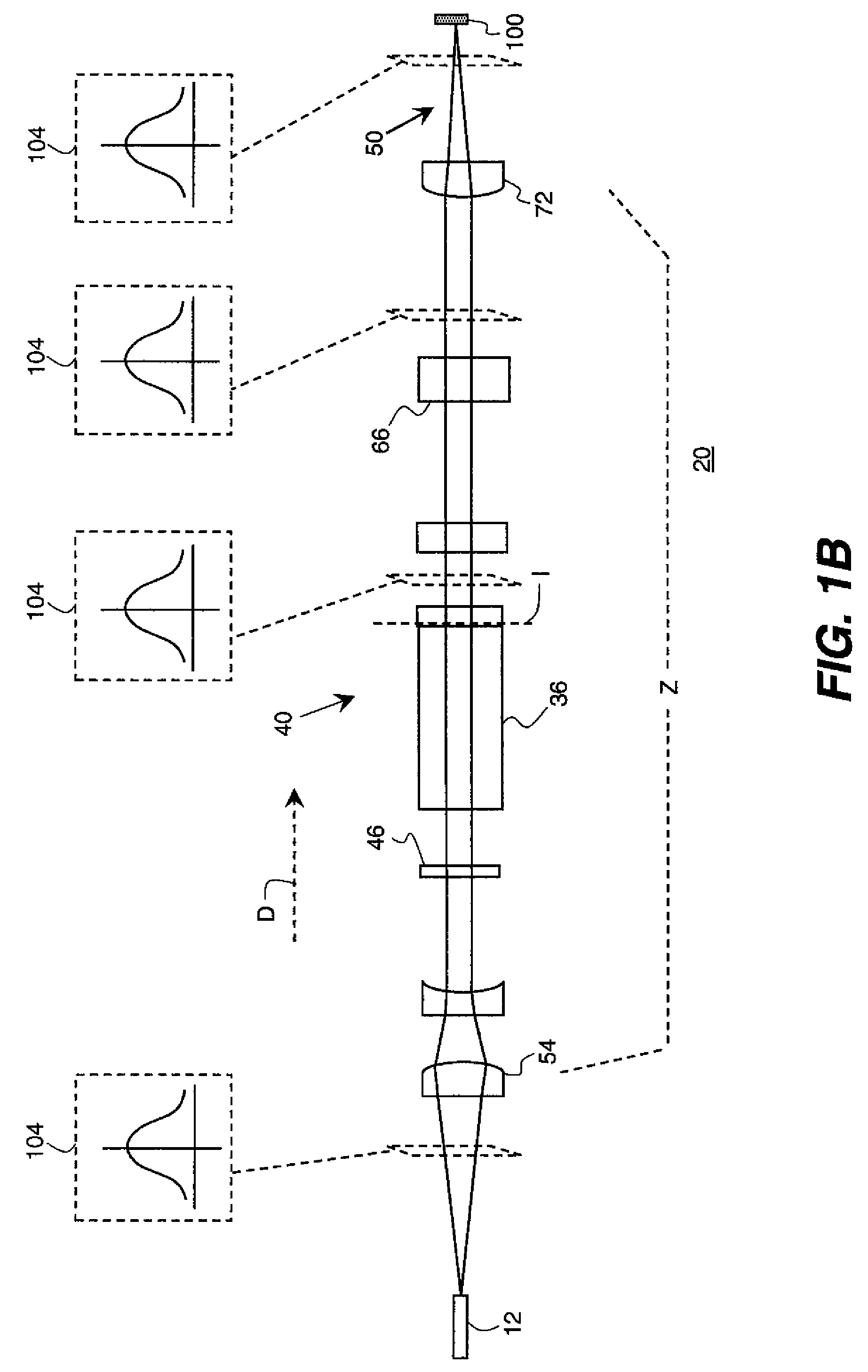Line illumination apparatus using laser arrays
a laser array and illumination apparatus technology, applied in the field of illumination apparatus, can solve the problems of high cost of increasing output power, unsuitable for use with gems or glv light modulators in display applications, and unsuitable for high-coherent laser solutions, etc., and achieve the effect of reducing speckles
- Summary
- Abstract
- Description
- Claims
- Application Information
AI Technical Summary
Benefits of technology
Problems solved by technology
Method used
Image
Examples
Embodiment Construction
[0047]The present description is directed in particular to elements forming part of, or cooperating more directly with, apparatus in accordance with the invention. It is to be understood that elements not specifically shown or described may take various forms well known to those skilled in the art. Figures shown and described herein are provided in order to illustrate key principles of operation of the present invention and are not drawn with intent to show actual size or scale. Some exaggeration may be necessary in order to emphasize relative spatial relationships or principles of operation.
[0048]In the context of the present disclosure, the term “cross-array” is equivalent to the width direction of the line of illumination that is generated by the apparatus of the present invention. The term “cross array” is descriptive of the use of the illumination apparatus of the present invention when it directs a line of illumination onto a linear array light modulator, such as a GEMS device...
PUM
 Login to View More
Login to View More Abstract
Description
Claims
Application Information
 Login to View More
Login to View More - R&D
- Intellectual Property
- Life Sciences
- Materials
- Tech Scout
- Unparalleled Data Quality
- Higher Quality Content
- 60% Fewer Hallucinations
Browse by: Latest US Patents, China's latest patents, Technical Efficacy Thesaurus, Application Domain, Technology Topic, Popular Technical Reports.
© 2025 PatSnap. All rights reserved.Legal|Privacy policy|Modern Slavery Act Transparency Statement|Sitemap|About US| Contact US: help@patsnap.com



